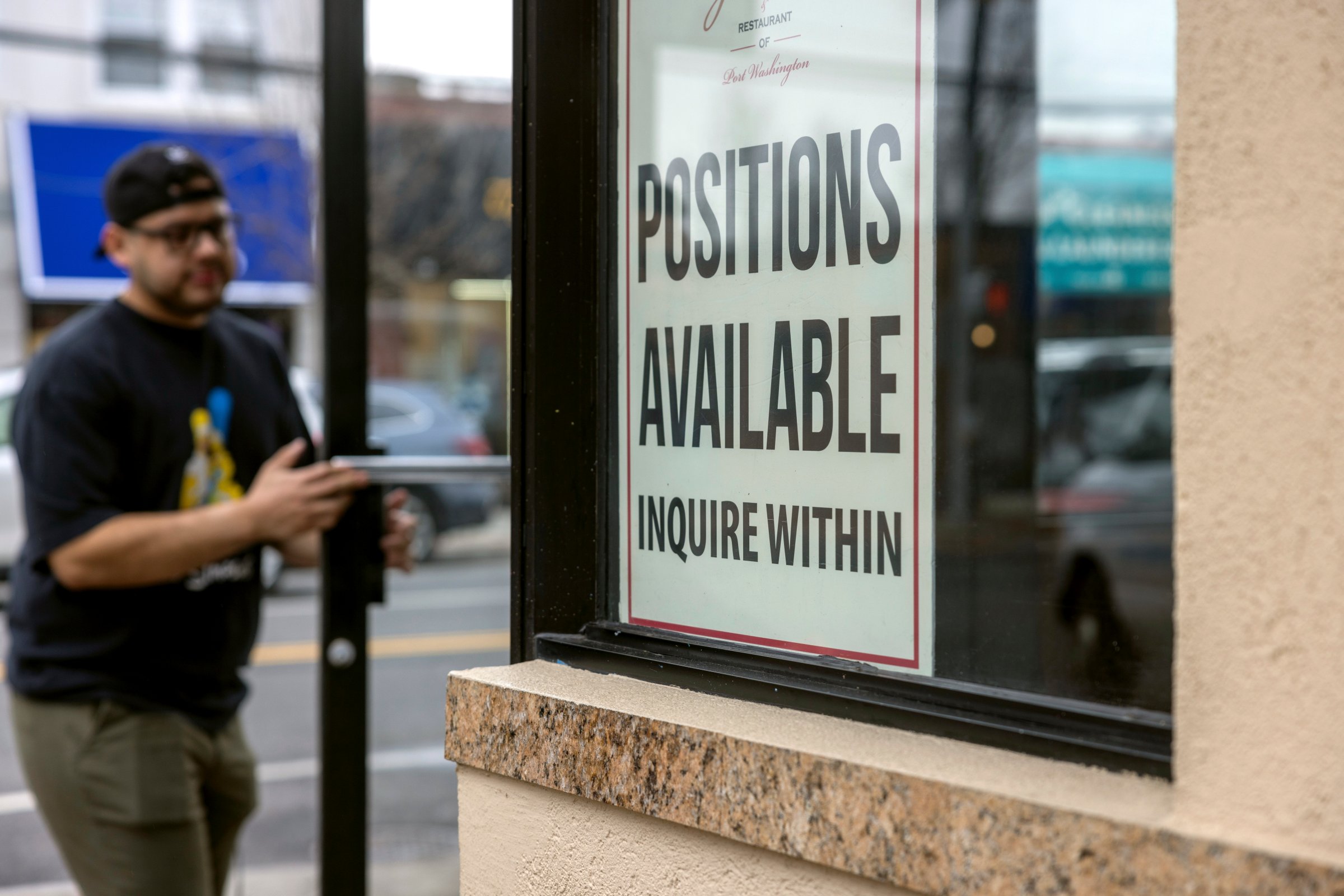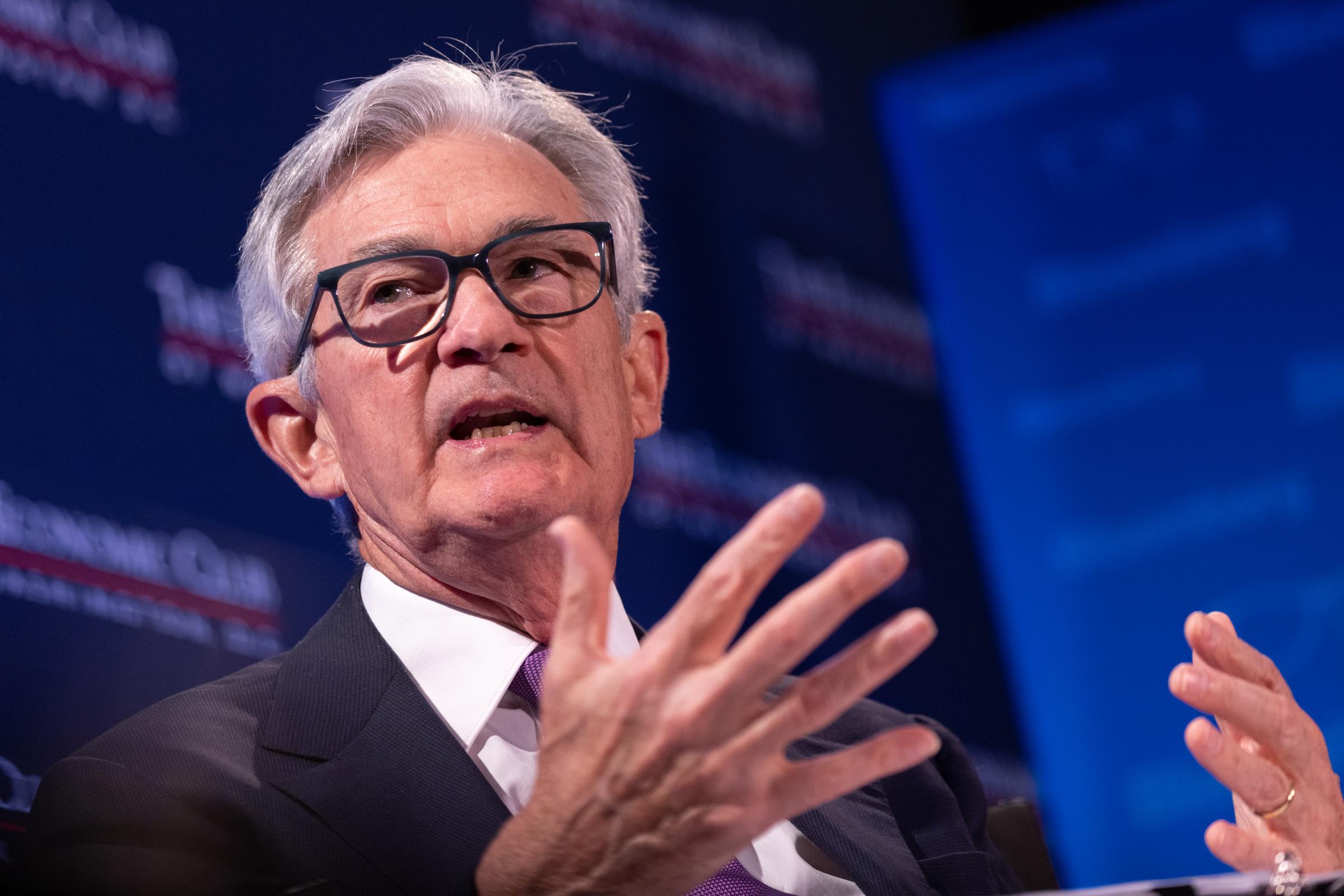
By law, the U.S. Federal Reserve is supposed to be a champion of working families, instructed by Congress to aim for maximum employment and low inflation. But make no mistake, the central bank is not your friend—and a growing number of economists are questioning whether its age-old approach to combating high inflation makes sense.
The Fed’s method of raising interest rates to slow down an overstimulated economy doesn’t always produce results that are good for workers, economists say. It’s a model that is “breaking down,” says Robert Reich, former U.S. Secretary of Labor in the Clinton Administration. In an interview with TIME, Reich says the central bank’s approach fails to acknowledge many other inflationary forces, such as the ongoing war in Ukraine, and the ability of many global corporations to set prices and increase the likelihood of price-fixing or market manipulation. “A large piece of the inflation puzzle is not coming from wages,” he says. “The Fed’s old model had been wage-price inflation, but today wages lag prices.”
Take the most recent jobs report. After months of steady declines in job growth, the U.S. labor movement got some unexpected good news on Friday when the government announced that more than a half million workers were hired in January, pushing the unemployment rate to a level not seen since 1969.
Despite the good news, Fed officials were “probably hoping for more of a slowdown in the jobs report,” says David Wessel, director of the Hutchins Center on Fiscal & Monetary Policy at the Brookings Institution. “What we’ve seen in the last couple of months with a falling rate of inflation and slowing wage growth at a very tight and strong labor market does challenge the conventional wisdom on which economists, including those at the Fed, generally rely,” Wessel tells TIME.
In his first public comments since the jobs report, Powell acknowledged this week that the jump in hiring was “stronger than anyone I know expected” and that the process of getting inflation back to normal levels will require some pain for workers. “There has been an expectation that it will go away quickly and painlessly—and I don’t think that’s at all guaranteed,” Powell said during a moderated discussion before the Economic Club of Washington, D.C. on Tuesday. “The base case for me is that it will take some time, and we’ll have to do more rate increases, and then we’ll have to look around and see whether we’ve done enough.”

To Powell and central bankers, the hiring boom is viewed as an obstacle in its fight to corral the fastest inflation in decades. Officials are also worried that wage growth could stop inflation from returning to their 2% target, another of the Fed’s aims that puts its interests at odds with American wage-earners.
Wessel points out, for instance, that the Fed was likely glad to see the pace of wage increases come down. Average hourly pay grew 4.4% in January from a year earlier, down from a peak of 5.6% in March.
The Fed’s long-standing belief is that a job market with strong hiring and increased wages typically fuels higher inflation. Under this economic model, consumers are more likely to spend freely when they have higher incomes, and companies tend to raise their prices to help cover climbing labor costs. It might seem odd to regard wage increases as a problem, but the Fed’s approach highlights the harsh trade-offs at the heart of the battle against inflation: To keep prices stable, it needs to be harder for workers to find a job and get a pay raise, according to the Fed.
The central bank has been aggressively increasing interest rates to slow the economy and bring inflation back to around its 2% target. Last Wednesday, the Fed raised its benchmark interest rate for an eighth time since March, although at a slower pace, and indicated that further increases were probable. Fed Chair Powell has suggested that hard times are coming, particularly for workers. “I wish there were a completely painless way to restore price stability,” Powell said at a news conference on Dec. 14. “There isn’t.”
Reich believes that the Fed has been too focused on the dangers of a tight labor market leading to higher wages, a stance that he says “neglects the other side of their mandate—to promote maximum employment.”
For the most part, the approach appears to be working to reduce inflation—but not without painful consequences. Price increases are moderating, and some economists think consumers have seen the worst of it. The Consumer Price Index, which is the government’s main inflation gauge, rose 6.5% year-over-year in December, down from a peak increase of 9.1% recorded in June. But last month’s labor benchmarks tell a different story. The unemployment rate dropped to a new 53-year low of 3.4% as employers added an explosive 517,000 jobs. And despite the pain of inflation, most businesses have appeared busy over the last year—from airplanes to restaurants to stores.
The Fed’s main inflation-fighting tool is its ability to move interest rates, effectively raising the cost of borrowing money and ultimately slowing the economy. But to some economists and labor experts, this isn’t the most effective tool. “The Fed is using the one tool it has—raising interest rates—and that’s dangerous,” says Reich, who believes the Fed is showing callous disregard for the economic welfare of millions of Americans by pursuing policy that stunts job growth.
“The people who are most likely to lose their jobs and certainly who are no longer getting wage increases are poor and low-income people, who are disproportionately, people of color and women,” Reich says. “They are the ones who are being drafted into the inflation fight when the economy slows. They’re the first to lose their jobs, just as they are the last to get jobs when the economy tightens.”
Most estimates say that unemployment will have to reach as high as 7.5%, more than double its current level, to get inflation down to the Fed’s target of 2%. “The Fed wants more unemployment,” Wessel says. “[Chair] Jerome Powell keeps saying that, well, maybe we can just reduce the number of unfilled jobs, the job vacancies without anybody actually losing their job, but that’s a bit harder.”
Chris Becker, associate director of policy and research and a senior economist at Groundwork Collaborative, which promotes left-leaning economic policies, says that increasing interest rates will not address what he believes are still the root causes of inflation: supply-chain interruptions, the war in Ukraine and corporations manipulating the market to increase profits. He believes that this approach is likely to result in a recession and a rise in unemployment, particularly impacting low-wage workers who would be the most affected by job loss. This could also hinder recent efforts of the central bank to promote more equitable job growth.
African American unemployment, which reached a high of nearly 17% early on in the pandemic, has declined to just under 6%, close to a historic low. However, the Fed’s interest rate hikes may threaten these gains. “We know that Black workers consistently have double the unemployment rate of white workers, and that is maintained over recessions,” Becker says. “It’s not just that workers in general would be harmed by a recession, but it’s the most vulnerable who would be hurt the most.” Progressive economists say these inequities reflect an institutional bent at the central bank, in which workers must always bear the consequences of the fight against inflation.
But for now, Fed officials appear to have little intention of backing away from its interest rate hikes—or aggressive inflation target. “There’s absolutely no reason to continue to raise interest rates,” Reich says. “The Fed should pause now, and we should re-examine its goal of 2% inflation. That’s purely arbitrary, and achieving that inflation target may cause unnecessary harm to millions of Americans.”
More Must-Reads From TIME
- The 100 Most Influential People of 2024
- Coco Gauff Is Playing for Herself Now
- Scenes From Pro-Palestinian Encampments Across U.S. Universities
- 6 Compliments That Land Every Time
- If You're Dating Right Now , You're Brave: Column
- The AI That Could Heal a Divided Internet
- Fallout Is a Brilliant Model for the Future of Video Game Adaptations
- Want Weekly Recs on What to Watch, Read, and More? Sign Up for Worth Your Time
Write to Nik Popli at nik.popli@time.com